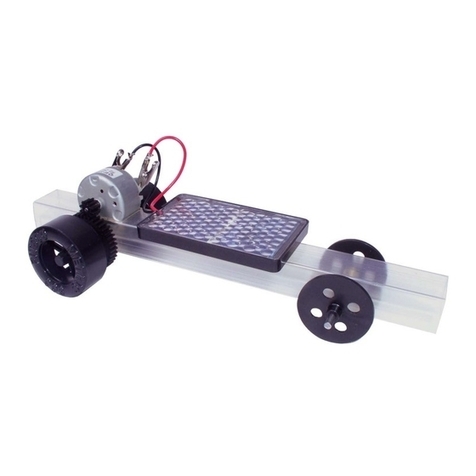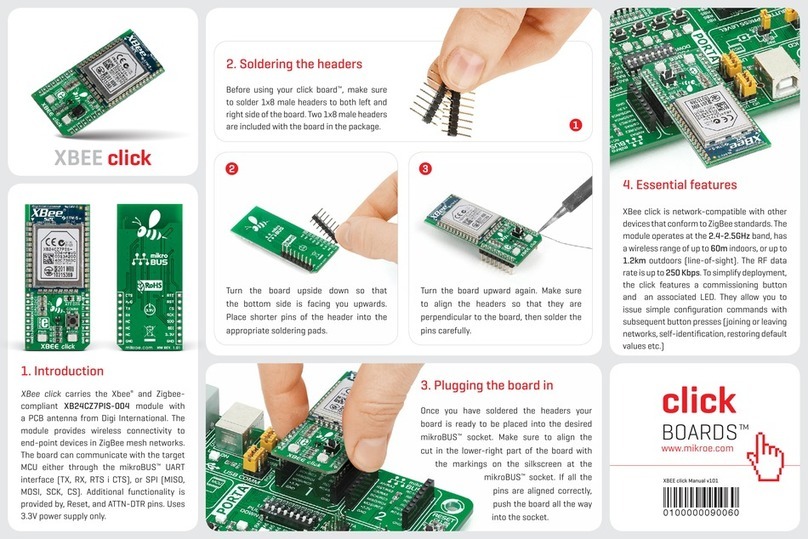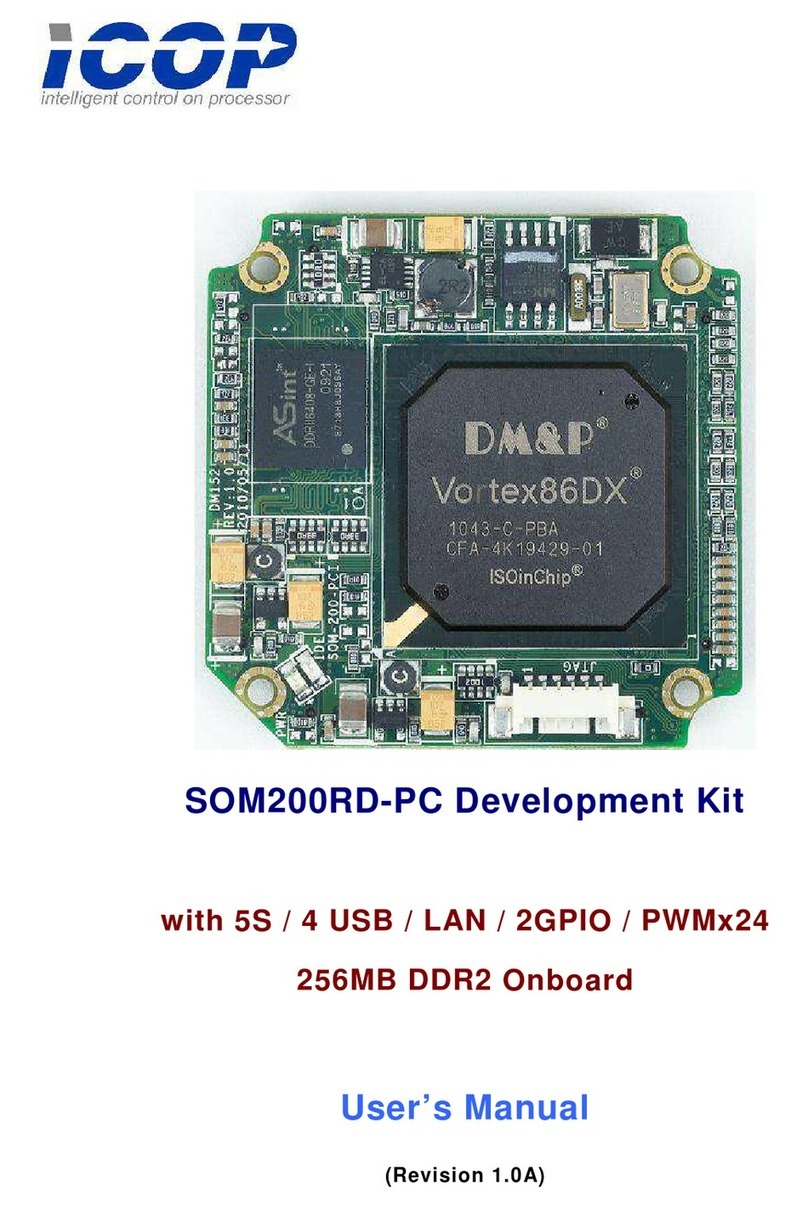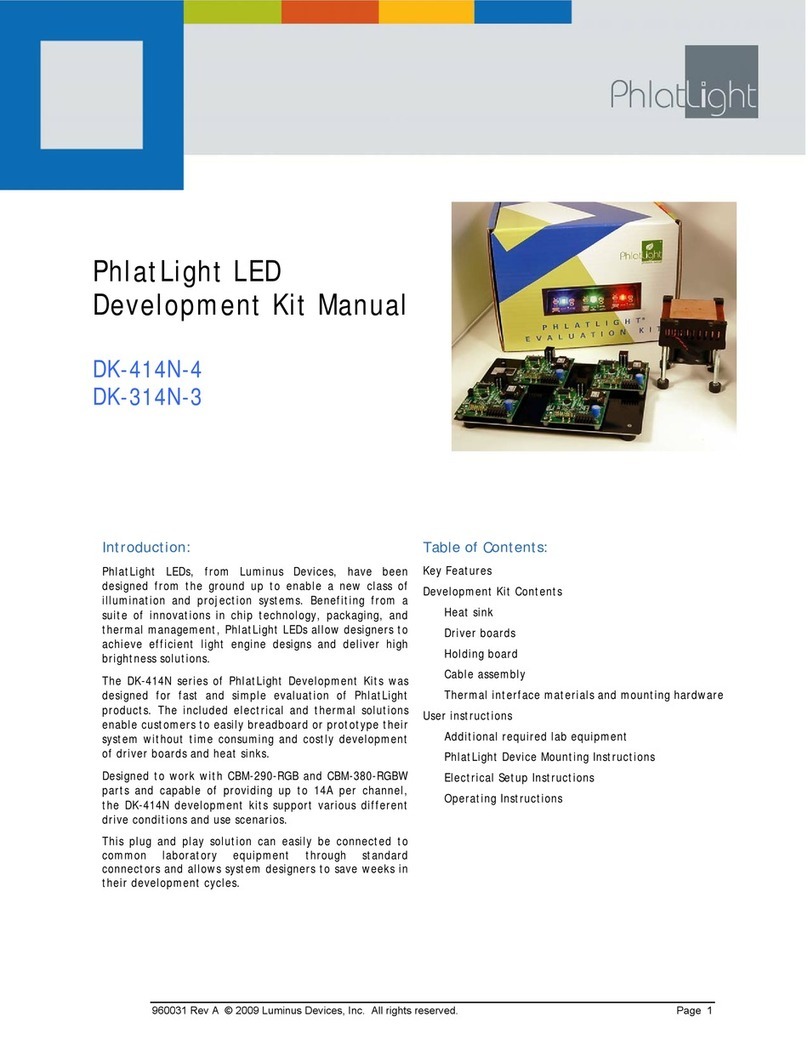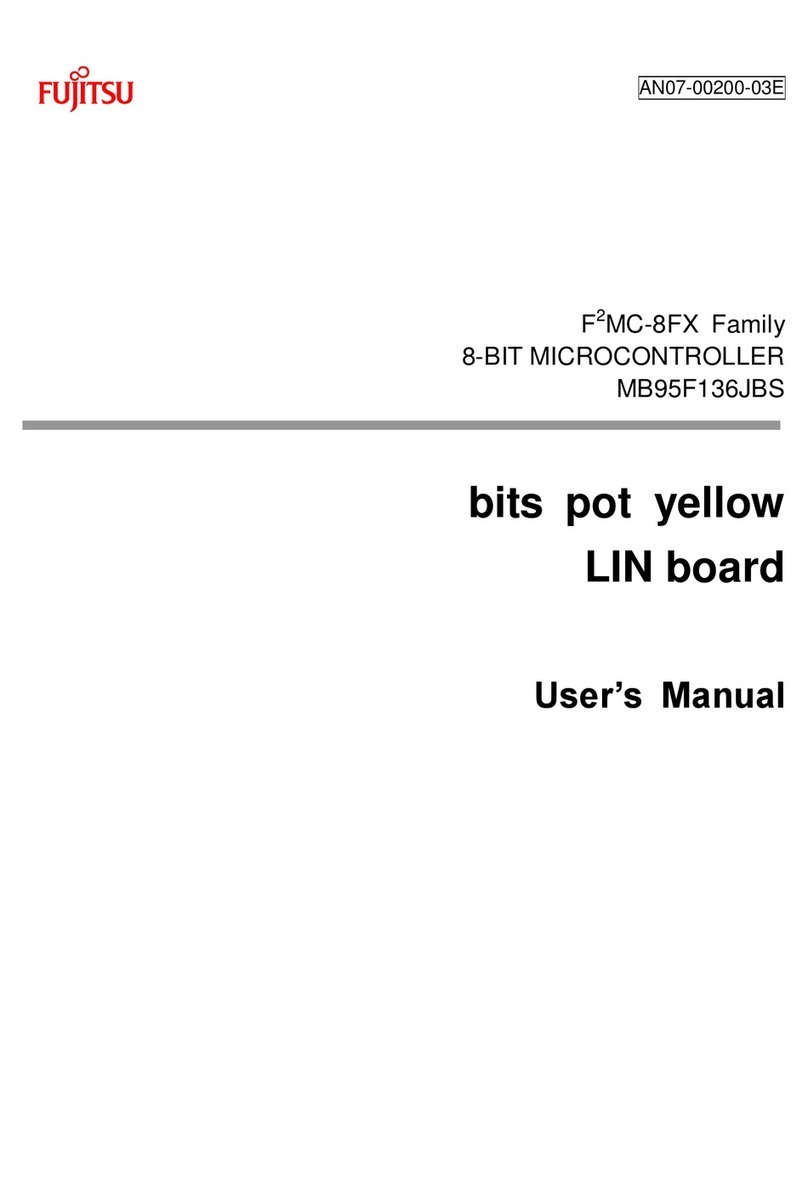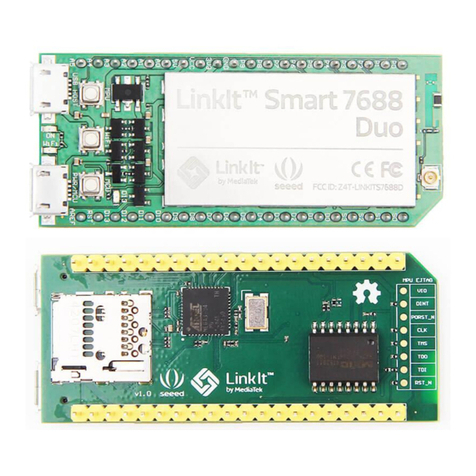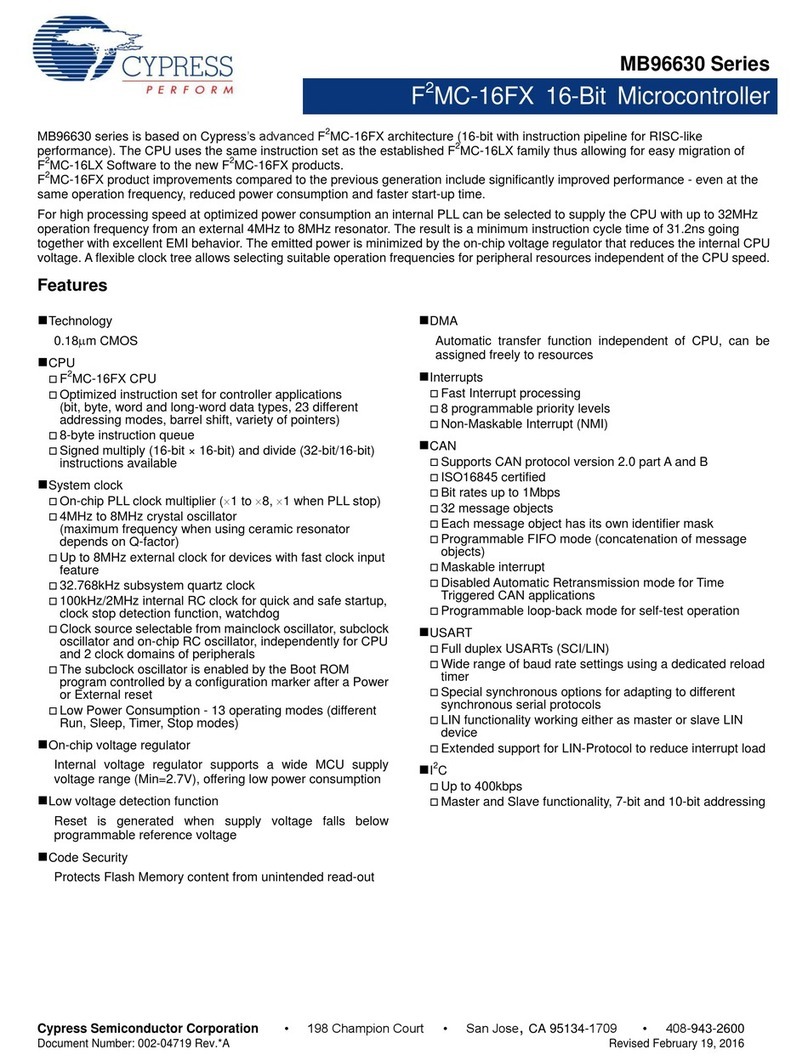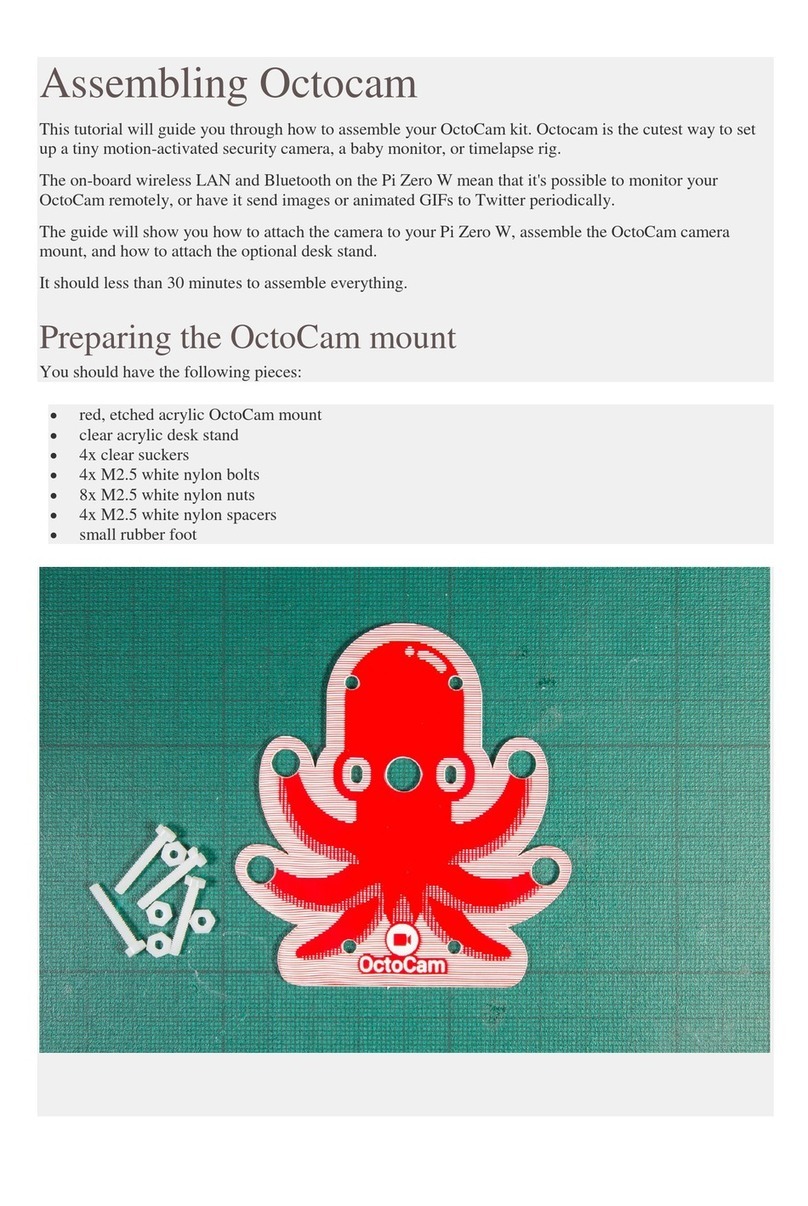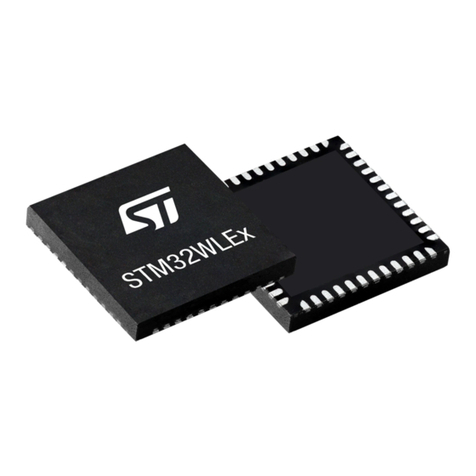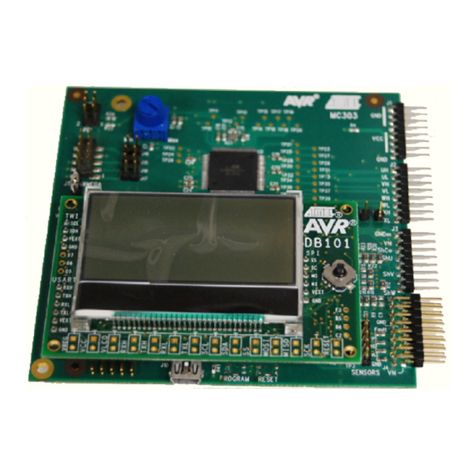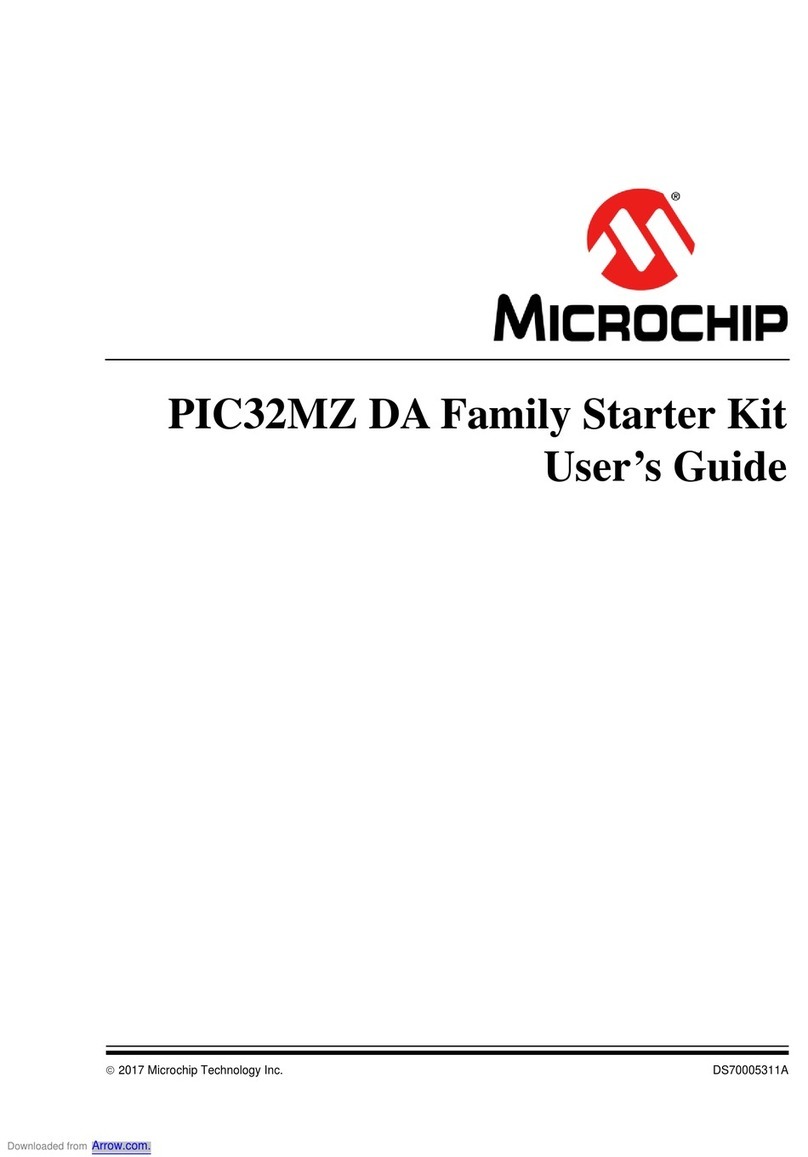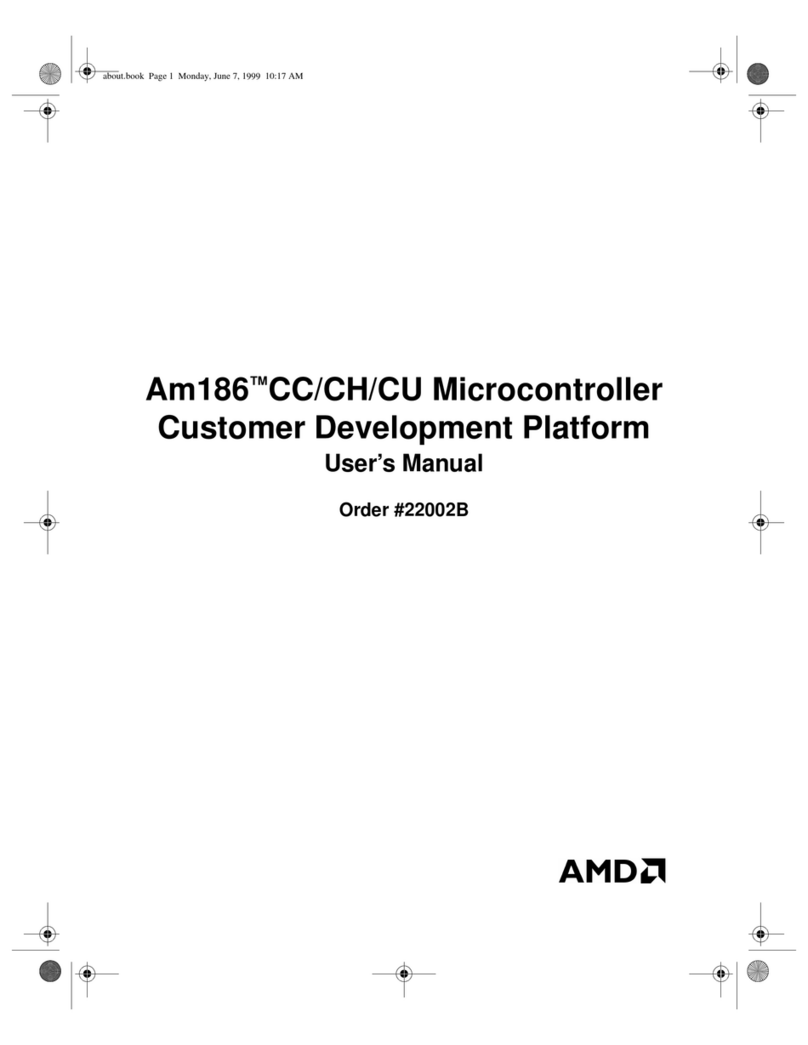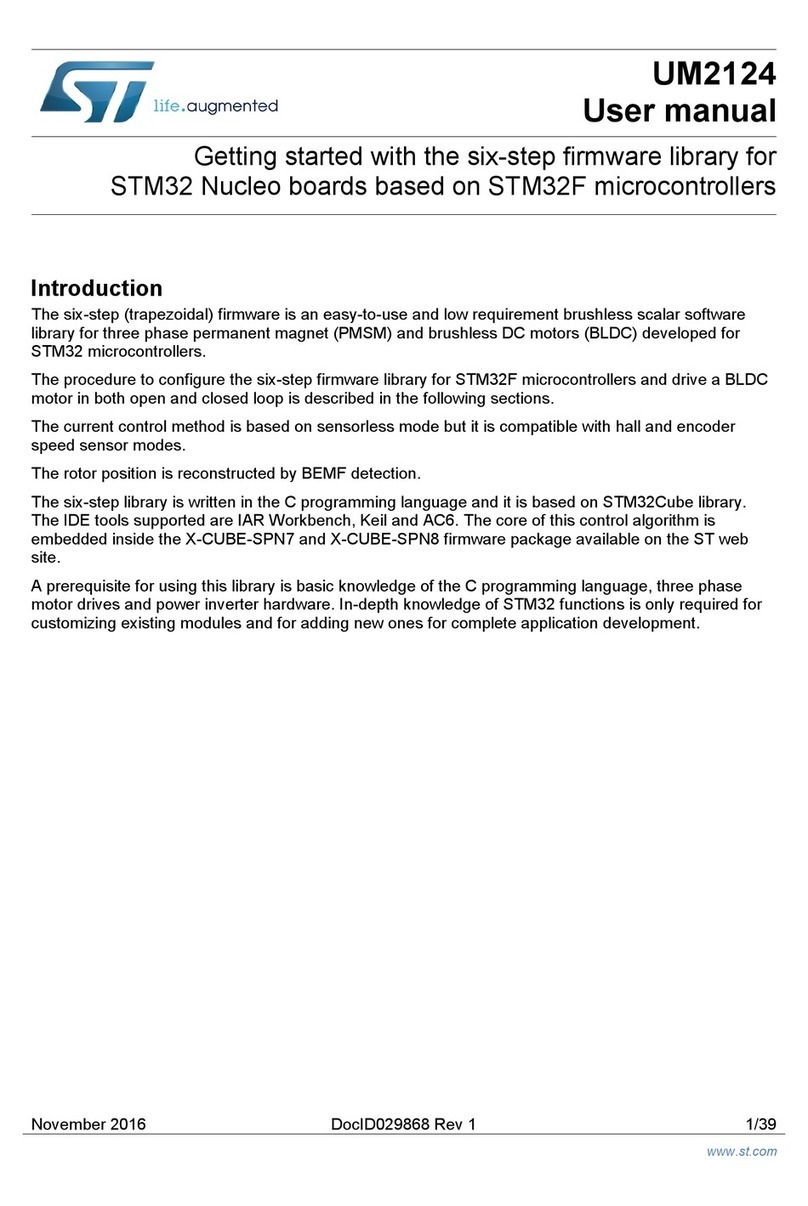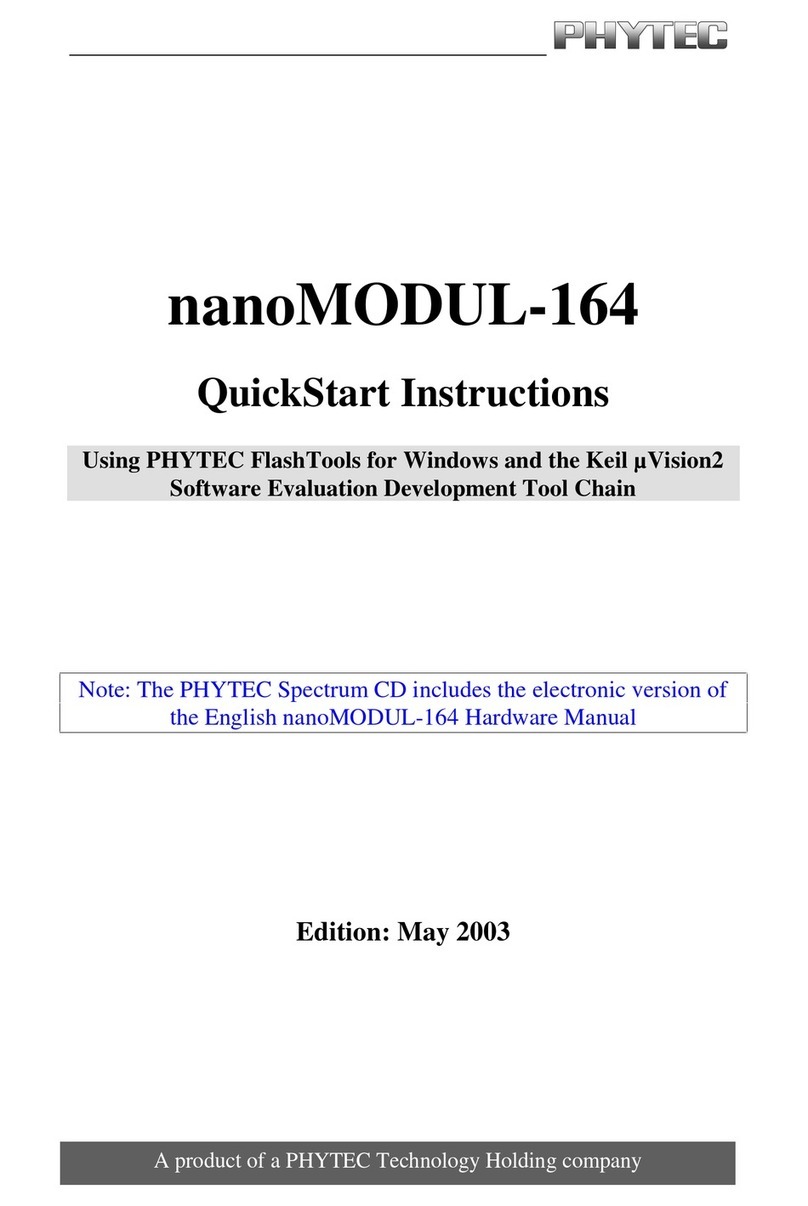Dave Embedded Systems XELK User manual

Axel Embedded Linux Kit (XELK)
Quick Start Guide
Solo / Dual / Quad ARM Cortex-A9
CP Module

X E L K Q u i c k S t a r t G u i d e v . 1 . 0 . 2
<Page intentionally left blank>
May, 2014 2/50

X E L K Q u i c k S t a r t G u i d e v . 1 . 0 . 2
Table of Contents
1 Preface.....................................................................................................................................5
1.1 About this manual.............................................................................................................5
1.2 Copyrights/Tra emarks.....................................................................................................5
1.3 Stan ar s..........................................................................................................................5
1.4 Disclaimers.......................................................................................................................5
1.5 Warranty............................................................................................................................6
1.6 Technical Support.............................................................................................................6
1.7 Relate ocuments...........................................................................................................7
1.8 Conventions, Abbreviations, Acronyms............................................................................8
2 Intro uction.............................................................................................................................11
2.1 Axel SOM........................................................................................................................11
2.2 Embe e Linux.............................................................................................................13
2.3 XELK...............................................................................................................................14
2.3.1 Kit Contents.............................................................................................................16
2.3.2 XELK Release Notes...............................................................................................16
2.3.2.1 Version 1.0.0....................................................................................................16
2.3.2.2 Version 1.1.0....................................................................................................17
2.3.2.3 Version 1.2.0....................................................................................................17
2.3.2.4 Releases history...............................................................................................17
2.3.2.5 Known limitations.............................................................................................18
3 XELK Quick Start...................................................................................................................19
3.1 Unboxing.........................................................................................................................19
3.2 Har ware setup...............................................................................................................20
3.3 First boot.........................................................................................................................20
3.4 Installing DVDK...............................................................................................................22
3.4.1 MicroSD contents....................................................................................................22
3.4.2 Importing the virtual machine..................................................................................23
3.4.3 Launching the virtual machine.................................................................................25
4 Developing Environment........................................................................................................28
4.1 Intro uction.....................................................................................................................28
4.2 Software components.....................................................................................................29
4.2.1 Toolchain..................................................................................................................29
4.2.2 Bootloa er...............................................................................................................29
4.2.3 Kernel......................................................................................................................30
4.2.4 Target root file system.............................................................................................30
4.2.5 U-Boot an Linux git repositories............................................................................31
4.2.5.1 RSA key generation.........................................................................................31
4.3 Buil system....................................................................................................................32
4.3.1 Intro uction..............................................................................................................32
4.3.2 Setting up the server environment..........................................................................33
4.3.2.1 TFTP Server.....................................................................................................33
May, 2014 3/50

X E L K Q u i c k S t a r t G u i d e v . 1 . 0 . 2
4.3.2.2 NFS Server.......................................................................................................33
4.3.2.3 Pre-built toolchain............................................................................................34
4.3.2.4 Pre-built root file system...................................................................................34
4.3.2.5 Using a buil tool..............................................................................................35
4.4 Working with XELK.........................................................................................................37
4.4.1 Buil ing u-boot.........................................................................................................38
4.4.2 Buil ing Linux kernel...............................................................................................38
4.4.3 Recovery proce ure................................................................................................39
5 Frequently Aske Questions..................................................................................................41
5.1 Q: Where can I foun Axel SOM information?...............................................................41
5.2 Q: I've receive the XELK package. How am I suppose to start working with it?........41
5.3 Q: How can I up ate the XELK version?........................................................................42
5.4 Q: How can I work with the XYZ peripheral/interface?...................................................42
5.5 How can I configure the Axel system to boot from network?.........................................42
5.6 Q: Can you suggest some gui elines for the carrier boar esign?..............................43
6 Appen ices.............................................................................................................................44
6.1 U-Boot startup an environment.....................................................................................44
6.2 Boot messages on the serial console.............................................................................44
May, 2014 4/50

X E L K Q u i c k S t a r t G u i d e v . 1 . 0 . 2
1 Preface
1.1 About this manual
This manual describes the Axel Embedded Linux Kit (XELK)
and serves as a quick guide for start working with the
develo ment kit.
1.2 Copyrights/Trademarks
Ethernet® is a registered trademark of XEROX Cor oration.
All other roducts and trademarks mentioned in this
manual are ro erty of their res ective owners.
All rights reserved. S ecifications may change any time
without notification.
1.3 Standards
DAVE Embedded Systems is certified to ISO 9001
standards.
1. Disclaimers
DAVE Embedded Systems does not assume any
res onsibility for availability, su ly and su ort related to
all roducts mentioned in this manual that are not strictly
art of the Axel CPU module, the AxelEVB-Lite carrier
board and the Dacu carrier board.
Axel CPU Modules are not designed for use in life su ort
a liances, devices, or systems where malfunctioning of
these roducts can reasonably be ex ected to result in
ersonal injury. DAVE Embedded Systems customers who
are using or selling these roducts for use in such
a lications do so at their own risk and agree to fully
indemnify DAVE Embedded Systems for any damage
resulting from such im ro er use or sale.
May, 2014 5/50

X E L K Q u i c k S t a r t G u i d e v . 1 . 0 . 2
1.5 Warranty
Axel SOM, AxelEVB-Lite and Dacu are guaranteed against
defects in material and workmanshi for the warranty
eriod from the shi ment date. During the warranty eriod,
DAVE Embedded Systems will at its discretion decide to
re air or re lace defective roducts. Within the warranty
eriod, the re air of roducts is free of charge rovided
that warranty conditions are observed.
The warranty does not a ly to defects resulting from
im ro er or inadequate maintenance or handling by the
customer, unauthorized modification or misuse, o eration
outside of the roduct’s s ecifications or im ro er
installation or maintenance.
DAVE Embedded Systems will not be res onsible for any
defects or damages to other roducts not su lied by DAVE
Embedded Systems that are caused by a faulty Axel
module, AxelEVB-Lite or Dacu.
1.6 Technical Support
We are committed to making our roducts easy to use and
will hel customers use our CPU modules in their systems.
Technical su ort is delivered through email for registered
kits owners. Su ort requests can be sent to
su ort-axel@dave.eu. Software u grades are available for
download in the restricted download area of DAVE
Embedded Systems web site:
htt ://www.dave.eu/reserved-area. An account is required
to access this area.
Please refer to our Web site at
htt ://www.dave.eu/dave- c u-module-imx6-axel.html for the
latest roduct documents, utilities, drivers, Product Change
Notices, Board Su ort Packages, A lication Notes,
mechanical drawings and additional tools and software.
May, 2014 6/50

X E L K Q u i c k S t a r t G u i d e v . 1 . 0 . 2
1.7 Related documents
Document Location
DAVE Embedded
Systems
Developers Wiki
http://wiki.dave.eu/index.php/Main_Pa
ge
i.MX6 Application
Processor
eference Manual
http://cache.freescale.com/files/32bit/
doc/ref_manual/IMX6DQ M.pdf?
fpsp=1&WT_TYPE= eference
%20Manuals&WT_VENDO =F EESCA
LE&WT_FILE_FO MAT=pdf&WT_ASSET
=Documentation
Freescale I.MX
community
webiste
https://community.freescale.com/com
munity/imx
Freescale
L3.0.35-4.1.0
documentation
package
https://www.freescale.com/webapp/D
ownload?
colCode=L3.0.35_4.1.0_LINUX_DOCS
&location=null&fpsp=1&WT_TYPE=Su
pporting
%20Information&WT_VENDO =F EES
CALE&WT_FILE_FO MAT=gz&WT_ASS
ET=Documentation&Parent_nodeId=1
337637154535695831062&Parent_pa
geType=product
Axel main page on
DAVE Embedded
Systems
Developers Wiki
http://wiki.dave.eu/index.php/Categor
y:Axel
Axel Hardware
Manual
http://www.dave.eu/sites/default/files/
files/axel-hm.pdf
Axel Software
Manual
http://wiki.dave.eu/index.php/Softwar
e_Manual_(Axel)
AxelEVB-Lite page
on DAVE
Embedded
Systems
http://wiki.dave.eu/index.php/AxelEVB
-Lite
May, 2014 7/50

X E L K Q u i c k S t a r t G u i d e v . 1 . 0 . 2
Document Location
Developers Wiki
Dacu User's Guide Provided with kit documentation
Building
Embedded Linux
Systems By Karim
Yaghmour.
This book covers all matters involved
in developing software for embedded
systems. It is not a reference guide,
but it provides a complete and
exhaustive overview that helps the
developer save a lot of time in
searching for such information on the
Internet
Training and Docs
sections of Free
Electrons website.
Brief but still exhaustive overview of
the Linux and Embedded Linux world.
Tab. 1: elated documents
1.8 Conventions, Abbreviations, Acronyms
Abbreviation Definition
BTN Button
DVDK Dave Virtual Development Kit
EMAC Ethernet Media Access Controller
GPI General purpose input
GPIO General purpose input and output
GPO General purpose output
LTIB Linux Target Image Builder
OVA Open Virtualization Archive
PCB Printed circuit board
PMIC Power Management Integrated Circuit
PSU Power supply unit
TC eal time clock
SOC System-on-chip
SOM System-on-module
May, 2014 8/50

X E L K Q u i c k S t a r t G u i d e v . 1 . 0 . 2
Abbreviation Definition
WDT Watchdog
XELK Axel Embedded Linux Kit
Tab. 2: Abbreviations and acronyms used in this manual
May, 2014 9/50

X E L K Q u i c k S t a r t G u i d e v . 1 . 0 . 2
Revision History
Version Date Notes
1.0.0 November 2013 First official release
1.0.1 January 2014 eleased with XELK 1.1.0
Minor fixes
1.0.2 May 2014 Added support for AxelLite SOM
Minor fixes
eleased with XELK 1.2.0
May, 2014 10/50

X E L K Q u i c k S t a r t G u i d e v . 1 . 0 . 2
2 Introduction
2.1 Axel SOM
Axel is the new to -class
Solo/Dual/Quad core ARM
Cortex-A9 CPU module by
DAVE Embedded Systems,
based on the recent
Freescale i.MX6 a lication
rocessor.
Thanks to Axel, customers
have the chance to save
time and resources by using
a com act solution that
ermits to reach scalable
erformances that erfectly fits the a lication
requirements avoiding com lexities on the carrier board.
The use of this rocessor enables extensive system-level
differentiation of new a lications in many industry fields,
where high- erformance and extremely com act form
factor (85mm x 50mm) are key factors. Smarter system
designs are made ossible,
following the trends in
functionalities and interfaces
of the new, state-of-the-art
embedded roducts. Axel
offers great com utational
ower, thanks to the rich set
of eri herals, the Scalable
ARM Cortex-A9 together with
a large set of high-s eed I/Os
(u to 5GHz).
Axel enables designers to
create smart roducts suitable
for harsh mechanical and
thermal environments, allowing the develo ment of high
com uting and reliable solutions. Thanks to the tight
May, 2014 11/50
Fig. 2: Axel plugged on
AxelEVB-Lite
Fig. 1: Axel Ultra CPU
module

X E L K Q u i c k S t a r t G u i d e v . 1 . 0 . 2
integration between the ARM Core-based rocessing
system, designers are able to share the a lication through
the multi-core latform and/or to divide the task on
different cores in order to match with s ecific a lication
requirements (AMP makes ossible the creation of
a lications where RTOS and Linux work together on
different cores).Thanks to Axel, customers are going to save
time and resources by using a owerful and scalable
com act solution, avoiding com lexities on the carrier PCB.
Axel is designed and manufactured according to DAVE
Embedded Systems Ultra Line s ecifications, in order to
guarantee remium quality and technical value for
customers who require to erformances and flexibility.
Axel is suitable for high-end a lications such as medical
instrumentation, advanced communication systems, critical
real-time o erations and safety a lications.
For further information, lease refer to Axel Hardware
Manual.
May, 2014 12/50

X E L K Q u i c k S t a r t G u i d e v . 1 . 0 . 2
2.2 Embedded Linux
When we talk in general about Embedded Linux1, we refer
to an embedded system running Linux o erating system. As
the reader robably knows, Linux was first develo ed on
the PC latform, based on the famous x86 architecture.
Ty ical embedded systems using an o erating system (O.S.
for short), are equi ed with much lighter software. Recent
hardware advances made these systems so owerful that
now they can run a com lex O.S. such as Linux. This choice
has several benefits:
●The develo er can count on a reliable and efficient
software, develo ed and maintained by a large
community all over the world
●The software is o en-source, so develo ers have
access to the whole source code
●Since Linux runs on many different latforms (x86,
PowerPC, ARM, Su erH, MIPS etc.), a lications are
ortable by definition
●There are a lot of o en-source a lications running
on to of Linux that can easily be integrated in the
embedded system
●Last but not least, there are no license fees.
●The ty ical Embedded Linux system is com osed of:
●the bootloader – this software is run by the rocessor
after exiting the reset state. It erforms basic
hardware initialization, retrieves the Linux kernel
image (for exam le from a remote server via the
TFTP rotocol) and launches it by assing the ro er
arguments (command line and tags)
●the Linux kernel
●the root file system – this file system is mounted
(which means "made available", "attached") by the
kernel during the boot rocess on the root directory
(“/”).
The ty ical develo ing environment for an Embedded Linux
system is com osed of a host machine and a target
1 An exhaustive escription of this topic is beyon the scope of this ocument. We recommen rea ing
specific ocuments, eg Buil ing Embe e Linux Systems By Karim Yaghmour.
May, 2014 13/50

X E L K Q u i c k S t a r t G u i d e v . 1 . 0 . 2
machine. The host is used by the develo er to com ile the
code that will run on the target. In our case the target is
obviously the Axel module, while the host is assumed to be
a PC running the Linux o erating system. The Linux kernel
running on the target can mount the root file system from
different hysical media. For exam le, during the software
develo ment, we strongly recommend using a directory
ex orted via NFS by the host for this ur ose (see the
exam le configuration called net_nfs); however, for system
de loyed to the field, the root file system is usually stored
into a flash device.
2.3 XELK
Axel Embedded Linux Kit (XELK for short) rovides all the
necessary com onents required to set u the develo ing
environment for:
●building the bootloader (U-Boot)
●building and running Linux o erating system on
Axel-based systems
●building Linux a lications that will run on the target
The heart of Axel SOM is Freescale i.MX6 Solo/Dual/Quad
core a lication rocessor. From a software oint of view,
Freescale su orts this rocessor family through so-called
LTIB (Linux Target Image Builder) BSPs. The Linux BSP
releases are ublished on a regular basis and the release
ackages have a reference code as
L<Kernel_version>_<x.y.z> (eg: L3.0.35_4.1.0). For more
details lease refer to:
●htt ://www.freescale.com/weba /s s/site/ rod_summ
ary.js ?code=i.MX6Q&f s =1&tab=Design_Tools_Tab
●htt s://community.freescale.com/community/imx/conte
nt ?
filterID=contentstatus[ ublished]~category[imx6all]&
filterID=contentstatus[ ublished]~objectty e~objectt
y e[document]
Axel Embedded Linux Kit, in turn, is directly derived from
May, 2014 14/50

X E L K Q u i c k S t a r t G u i d e v . 1 . 0 . 2
L<Kernel_version>_<x.y.z> BSP versions. Hence XELK
documentation often refers to L<Kernel_version>_<x.y.z>
resources.
DAVE Embedded Systems adds to the latest
L<Kernel_version>_<x.y.z> BSP from Freescale the
customization required to su ort the Axel latform. For
this reason most of the documentation rovided by
Freescale remains valid for the XELK develo ment kit.
However, some customization is required, in articular at
bootloader and Linux kernel levels.
May, 2014 15/50

X E L K Q u i c k S t a r t G u i d e v . 1 . 0 . 2
2.3.1 Kit Contents
The following table lists the XELK com onents
Component Description
Axel Ultra or AxelLite SOM
CPU: Freescale i.MX6
Axel-EVB-Lite Carrier board
Dacu Carrier board
Ampire AM-800480STMQW
7” 800x480 LCD display
LVDS interface
AC/DC Single Output Wall Mount
adapter
Output: +12V – 2.0 A
MicroSDHC card with SD adapter
and USB adapter
2.3.2 XELK elease Notes
2.3.2.1 Version 1.0.0
First official release
May, 2014 16/50

X E L K Q u i c k S t a r t G u i d e v . 1 . 0 . 2
2.3.2.2 Version 1.1.0
●Minor u date that adds su ort for more eri herals:
NAND, RTC, I²C, SPI
●Touch screen works ro erly
●CAN works @ 1Mb s
●The system can boot from SD
2.3.2.3 Version 1.2.0
●Added su ort for AxelLite SOMs
●Bug fixes and minor changes
2.3.2. Releases history
XELK Version
elease
number
1.0.0 1.1.0 1.2.0
Status eleased eleased eleased
elease
date
November 2013 January 2014 May 2014
elease
notes
Version 1.0.0 Version 1.1.0 Version 1.2.0
SOM PCB
version
Axel Ultra:
CS030713
Axel Ultra:
CS030713A
Axel Ultra:
CS030713A
Axel Lite:
CS335013A
Supported
carrier
boards
AxelEVB-Lite
Dacu
AxelEVB-Lite
Dacu
AxelEVB-Lite
Dacu
U-Boot
version
2013.10-xelk-1.0.0 2013.10-xelk-1.1.0 2013.10-xelk-1.2.0
Linux
version
3.0.35-xelk-1.0.0 3.0.35-xelk-1.1.0 3.0.35-xelk-1.2.0
Drivers SPI NO Flash
(boot)
UA T debug
(2-wire)
USB Host
USB OTG
SPI NO Flash
(boot)
UA T debug
(2-wire)
USB Host
USB OTG
SPI NO Flash
(boot)
UA T debug
(2-wire)
USB Host
USB OTG
May, 2014 17/50

X E L K Q u i c k S t a r t G u i d e v . 1 . 0 . 2
XELK Version
SD/MMC1
CAN
Touch screen
controller
EMAC
SATA
HMDI
LVDS1
SD/MMC1
CAN
Touch screen
controller
EMAC
SATA
HMDI
LVDS1
NAND
TC
I²C
SPI
SD/MMC1
CAN
Touch screen
controller
EMAC
SATA
HMDI
LVDS1
NAND
TC
I²C
SPI
Freescale
BSP
version
L3.0.35-4.1.0 L3.0.35-4.1.0 L3.0.35-4.1.0
2.3.2.5 Known limitations
The following table re orts the known limitations of the
latest XELK version, which will be solved for the next
releases of the develo ment kit:
Issue Description
USB OTG Verified in Host and Device modes
eboot from software ebooting the system from software (eg:
launching the reboot command from
Linux user space) can lead to a system
lock. To solve it, reset the board with the
dedicated button (S10)
SD1 SD1 interface (available on the Axel Lite
adapter board as microSD connector)
detects the card only if it is inserted
before booting Linux
Ethernet 10 Mbps connections have not been
tested
May, 2014 18/50

X E L K Q u i c k S t a r t G u i d e v . 1 . 0 . 2
3 XELK Quick Start
This cha ter describes how to quickly start working with
the XELK kit. The following aragra hs will guide you
through the setu and installation rocedures.
3.1 Unboxing
Once you've received the kit, lease o en the box and check
the kit contents with the acking list included in the box
and using the table on cha ter 2.3.1 as a reference. The
hardware com onents (SOM, carrier boards and dis lay)
are re-assembled, as shown in the icture below:
May, 2014 19/50

X E L K Q u i c k S t a r t G u i d e v . 1 . 0 . 2
3.2 Hardware setup
This section describes how to quick start an Axel system
com osed of a Axel SOM lugged into the AxelEVB-Lite and
then mounted on the Dacu carrier board, rovided that it is
rogrammed according to XELK configuration.
The MicroSD rovided with the XELK can be used to boot
the system, since it contains a bootable artition
(mmcblk0 1) and a root file system artition (mmcblk0 2).
1. insert the MicroSD card rovided with the develo ment
kit into the MicroSD slot
2. connect the 12Vcc ower su ly to JP2 on the Dacu
board
3. (o tional) connect a serial cable between the J28
connector on the AxelEVB-Lite board and PC COM ort
through a NULL-modem cable (not rovided)
4. (o tional) start your favorite terminal software on PC;
communication arameters are:
Parameter Value
Baud rate 115200 bps
Data bits 8
Stop bits 1
Parity None
5. (o tional) to connect the system to Ethernet LAN,
lease lug cable on connector J6 connector of the
AxelEVB-Lite
The system is configured to boot automatically from the SD
card when owered u .
3.3 First boot
Once ower has been a lied, U-Boot bootloader will be
executed and the debug messages will be rinted on the
serial console. U-Boot automatically runs the autoboot
macro, that loads the kernel and launches it with the
o tions for mounting the root file system from the
May, 2014 20/50
Table of contents
